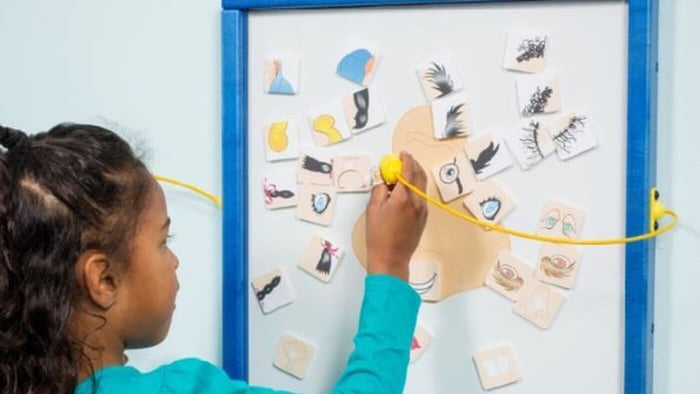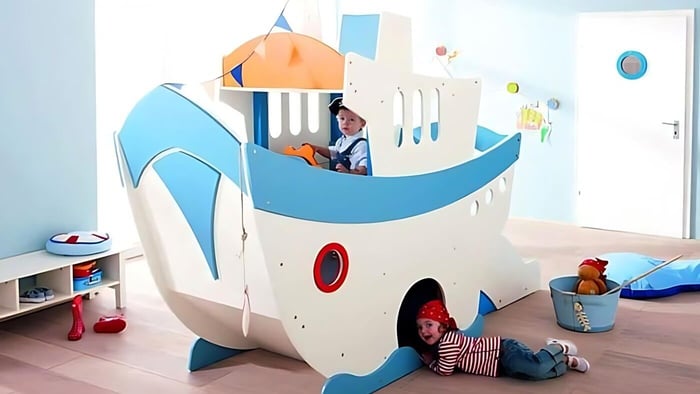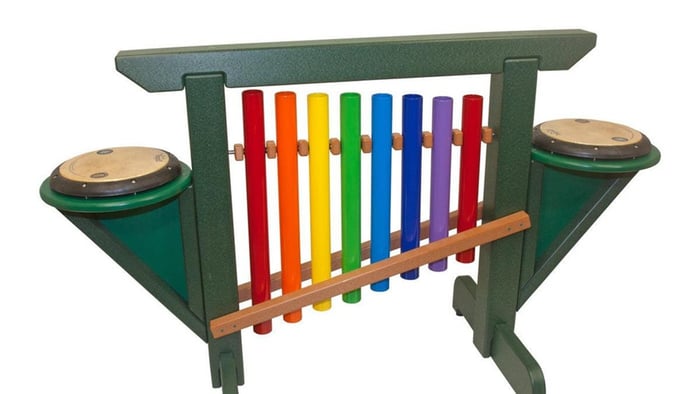
Drums and Bongos vs Melody Makers for Musical Playgrounds
Table of Contents
- Wondering which musical playground equipment to choose? Drums develop rhythm and gross motor skills while Melody Makers support cognitive development and work better for children with sensory sensitivities. Little People's Cove offers both outdoor-durable options, but combining them creates the most inclusive playground experience.
- KEY TAKEAWAYS:
- Why Musical Instruments Transform Children's Playground Experiences
- Drum Playground Stations: Rhythm Masters in Action
- Melody Makers: Creating Harmonious Play Environments
- Durability Differences That Impact Investment Value
- Accessibility Comparison: Which Serves More Children?
- Creating the Perfect Musical Playground with Both Systems
Wondering which musical playground equipment to choose? Drums develop rhythm and gross motor skills while Melody Makers support cognitive development and work better for children with sensory sensitivities. Little People's Cove offers both outdoor-durable options, but combining them creates the most inclusive playground experience.
KEY TAKEAWAYS:
- Drum Playground Stations build rhythm skills and physical coordination while Melody Makers support cognitive development through harmonious sound
- Melody Makers work better for children with sensory sensitivities and varying physical abilities
- Little People's Cove provides musical playground equipment built for outdoor durability
- Drums develop gross motor skills while Melody Makers enhance fine motor coordination
- Using both instrument types creates the most complete and inclusive musical playground
Why Musical Instruments Transform Children's Playground Experiences
Musical playground instruments add much more than sound to outdoor play areas. These specially designed instruments give children hands-on music opportunities that standard playgrounds simply cannot offer. Where typical equipment focuses on physical play, musical playgrounds offered by Little People's Cove bring together sensory learning, creative expression, and social development in each play session.
Built to handle weather conditions and enthusiastic young musicians, outdoor musical instruments turn regular playground visits into multisensory experiences. Children naturally gravitate toward making sounds and rhythm. These instruments work with this natural interest while building important skills. The immediate sound feedback creates a rewarding experience that keeps children engaged longer than many standard playground activities.
The true value of musical playgrounds comes from their inclusivity. Children of all abilities and developmental stages can participate, creating music together regardless of physical capabilities or musical background. This accessibility transforms playgrounds from physical activity spaces into environments that foster artistic expression, teamwork, and joy through sound.
Drum Playground Stations: Rhythm Masters in Action
QuaDDDD Play Drum Table
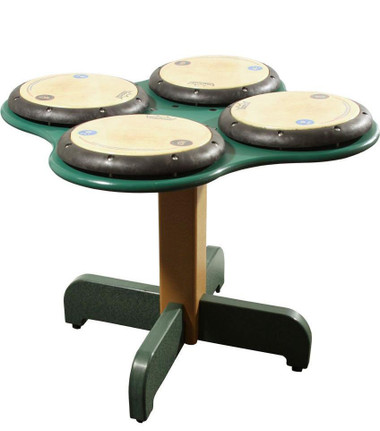
$2668.00
The QuaDDDD Play Drum Table is perfect for engaging in rhythmic play both inside and outside. It's designed to be easy on the hands and mallets. You can easily...… read more
1. Core Components: From Bongos to Drum Tables
Drum playground stations include various percussion instruments specifically built for outdoor settings. These typically feature panel drums mounted on play structures, free-standing kettle drums, bongo sets, snare drums, and specially designed drum tables. Each component uses weather-resistant materials like high-density polyethylene, stainless steel, and recycled plastics to withstand years of active playing in all weather conditions.
The drums balance durability with sound quality. Many use tunable synthetic drumheads that create authentic tones while resisting sun damage and moisture. The drums sit at different heights to work for children of various ages and abilities, including wheelchair users, so everyone can join in creating rhythms together.
2. Physical and Developmental Benefits
Drumming engages children's bodies and minds in uniquely beneficial ways. As children hit drums with their hands or soft mallets, they develop motor coordination, improve their sense of timing, and build upper body strength. The physical action of drumming provides proprioceptive input—awareness of body position and movement—which particularly helps with sensory integration.
Beyond physical benefits, outdoor bongos support cognitive development through pattern recognition and creation. Children naturally try out repeating rhythms, learning concepts of sequence and timing that build mathematical thinking foundations. The immediate sound feedback from drums helps children understand cause and effect relationships, while the freedom to create different sounds encourages experimentation and creative problem-solving.
3. Creating Community Through Percussion Play
Drum playground stations excel at fostering social connection. Unlike equipment that limits interaction to taking turns, drums naturally encourage group play. Multiple children can play simultaneously, forming impromptu drum circles where they learn to listen to each other, coordinate their rhythms, and enjoy creating something together.
This group aspect makes playground drums particularly effective for developing social-emotional skills. Children practice non-verbal communication, turn-taking, and cooperation as they match rhythms or take turns leading patterns. The inclusive nature of drumming—where there are no wrong notes and everyone can participate regardless of skill level—builds confidence while creating a shared experience that works across language barriers and developmental differences.
Melody Makers: Creating Harmonious Play Environments
EnSoul Musical Bell Tree
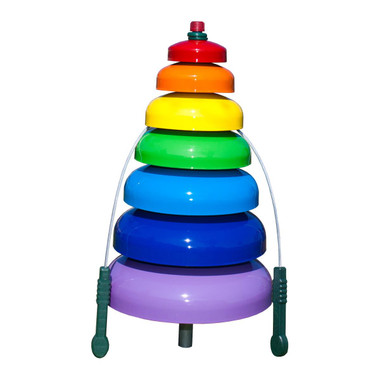
$2498.00
EnSoul Music's Rainbow Bell Tree is a percussion instrument with 7 bells, ranging in size from 6” to 18” wide and following the colors of...… read more
Key Features and Instrument Varieties
Melody Makers include a diverse family of musical instruments that introduce children to creating harmonies and melodies. These instruments typically include colorful xylophones with tuned metal bars, metallophones with bell-like tones, pipe structures that create different notes when struck, and various chime and bell panels arranged in sequence. Most use pentatonic scales where any combination of notes played together creates pleasant harmonies.
The design balances visual appeal with functionality. Many use color-coding systems where each note matches a specific color, helping children visually track musical patterns while playing. The instruments mount at accessible heights and angles for children of different heights and abilities, including wheelchair users. Mallets typically attach with durable tethers, keeping them available for all players while standing up to outdoor conditions.
The arrangement often encourages movement and discovery. From rainbow-colored chime arches to flower-shaped bell clusters, the playful designs invite children to move around the instruments and find how different components create varied sounds. This movement enhances the musical experience while promoting physical activity.
How Melody Supports Cognitive Development
Playing melodic instruments engages children's brains in ways that complement percussion play. As children try creating note sequences, they develop auditory discrimination—the ability to recognize and differentiate between similar but distinct sounds. This skill forms the foundation for both musical ability and language development, particularly the phonological awareness needed for reading readiness.
The sequential nature of melody playing also supports mathematical thinking through pattern recognition and creation. Children naturally experiment with repeating melodic phrases, developing an intuitive understanding of mathematical concepts like sequence, pattern, and even fractions as they experience how notes relate to one another in time and pitch.
Most importantly, melody instruments foster creativity and emotional expression. Children can create musical phrases that express feelings beyond words, developing emotional intelligence through artistic expression. The pleasant sounds provide immediate positive feedback, building confidence and encouraging continued exploration.
Inclusive Design for Children with Sensory Sensitivities
Melody Makers offer natural inclusivity, particularly for children with sensory processing differences or various physical abilities. The sounds from xylophones, metallophones, and chimes are generally gentler and less overwhelming than percussion instruments, making them good starting points for children with auditory sensitivities.
These instruments typically need lighter touch and more precise movements than drums, working well for children with different motor control abilities. Many can be played with minimal physical effort—a gentle tap on a chime or a light stroke across a xylophone produces a complete, satisfying sound. This low physical threshold makes musical participation possible for children with varying physical strengths and motor coordination.
Additionally, the pentatonic tuning common in playground melody instruments ensures that any combination of notes sounds harmonious. This eliminates the concept of "wrong notes," creating a failure-free environment where all children can succeed musically regardless of experience or ability. The result is a more inclusive musical playground that welcomes children across the neurodiversity spectrum.
EnSoul Rainbow Portable Chimes 7 Note
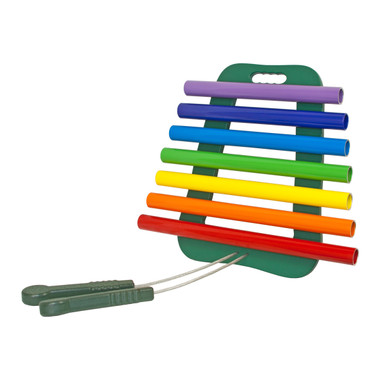
$1548.00
Enhance your outdoor space with this portable chime featuring 7 vibrant chimes! Each chime is powder coated for durability and color longevity, following the colors...… read more
Durability Differences That Impact Investment Value
Construction Materials and Weather Resistance
Both Drum Playground Stations and Melody Makers are built for longevity outdoors, but their construction materials differ in ways that affect their durability. Drum stations typically use high-density polyethylene frames, stainless steel support structures, and synthetic drumheads designed to withstand direct impact and moisture. These materials resist cracking, fading, and rust, even during extreme temperature changes and precipitation.
Melody Makers often feature anodized aluminum keys or tubes, powder-coated steel frames, and specialized resonating chambers. The anodization creates a hardened layer that protects aluminum components from corrosion while maintaining sound quality. Many melody instruments use recycled plastic supports that resist UV damage while providing vibration dampening that improves sound quality.
Both systems include vandal-resistant features, such as tamper-proof fasteners, securely anchored components, and materials selected for their resistance to cutting or breaking. However, the different physical designs mean that damage affects each system differently—percussion instruments may experience more impact stress, while melody instruments have more complex suspended elements that could potentially misalign with rough handling.
Maintenance Requirements and Longevity Factors
The maintenance needs of Drum Stations and Melody Makers differ in several key aspects that affect their total ownership cost over time. Drum stations generally have fewer moving parts and simpler mechanical systems, often resulting in less frequent maintenance. The primary maintenance tasks involve checking drumhead tension, ensuring secure mounting of all components, and occasionally cleaning surfaces to prevent dirt buildup that could affect sound quality.
Melody Makers typically need more nuanced maintenance due to their greater number of precisely tuned components. Regular inspection of mallets and tethers is essential, as these high-touch items wear over time. The tuning of melodic instruments may also need occasional adjustment, particularly in locations with extreme seasonal temperature changes that can affect metal expansion and contraction rates.
Both types benefit from routine cleaning and inspection. Weather-related factors that affect longevity include proximity to salt water (which can accelerate corrosion), exposure to freezing conditions (which can affect joint integrity), and placement in areas with falling debris like pine needles or leaves (which can collect in resonating chambers and affect sound quality). When properly maintained, both systems can provide 10-15 years of active use before major components need replacement.
~ELECTRIFIED~ Rock Star Bass Guitar Playground Instrument
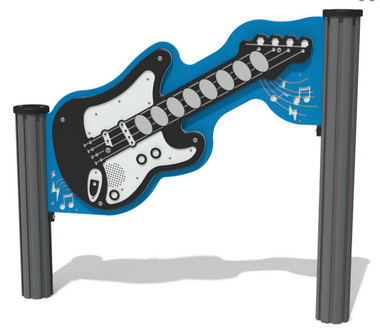
$3947.99
Allow budding musicians to become playground rock stars with this awesome new ~ELECTRIFIED~ Rock Star Bass Guitar Playground Instrument by Playground Prodigy. It looks and sounds ,...… read more
Accessibility Comparison: Which Serves More Children?
1. Physical Accessibility Considerations
When comparing the physical accessibility of musical playground equipment, several key factors determine how many children can effectively use the instruments. Drum Playground Stations typically work well for children with mobility challenges. Their design usually features drums mounted at multiple heights, accommodating both standing users and those in wheelchairs. The large striking surfaces need less precise motor control, making them accessible for children with various physical abilities. The simple action of hitting a drum—whether with hands, arms, or adaptive tools—means almost any child can produce a satisfying sound with minimal frustration.
Melody Makers provide different physical accessibility benefits. While they do require more refined motor skills to play individual notes, many modern designs include features that address this challenge. Many xylophones and metallophones have larger striking surfaces than traditional versions, and are arranged to minimize the precision needed to create pleasing sounds. The instruments typically mount at wheelchair-accessible heights with clear access paths for approach from multiple angles. For children with limited upper body mobility, the lighter touch needed to produce sound from a xylophone or chime panel can actually work better than drums, which might require stronger strikes.
Both instrument types can include adaptive features such as extended mallets, angled mounting, or specialized playing surfaces that address specific mobility needs. The best accessible playground includes both styles at varying heights and configurations to serve the widest possible range of physical abilities.
2. Cognitive and Sensory Accessibility
The cognitive requirements of musical play differ significantly between percussion and melodic instruments, affecting their accessibility for children with various processing styles and sensory needs. Drum Playground Stations offer cognitive simplicity that makes them immediately accessible—the cause-and-effect relationship between hitting the drum and producing sound is direct and intuitive. This immediacy helps children with cognitive differences who may prefer clear, predictable interactions. The rhythmic nature of drum play can particularly engage children who process information through patterns and repetition.
Melody Makers generally provide better sensory accessibility, particularly for children with auditory sensitivities. The gentler, more harmonic tones from xylophones and chimes are less likely to cause sensory discomfort than the more percussive sounds of drums. The predictable, pleasant sounds created even by random play reduce anxiety and increase participation for children who might find louder, less predictable percussion instruments overwhelming.
Color-coding on Melody Makers also provides valuable visual supports that can help children with cognitive differences understand musical concepts. These visual cues make abstract musical ideas more concrete and help children with various learning styles successfully use the instruments. For children with autism spectrum disorders or sensory processing differences, the predictability and control offered by melody instruments can be particularly valuable, allowing them to regulate their sensory input while still participating in musical play.
3. Social Engagement Patterns
The social dynamics created by different musical playground elements significantly impact their inclusive value. Drum Playground Stations naturally encourage group interaction and collaborative play. Their design often allows multiple children to play simultaneously on a single instrument or create impromptu drum circles. This communal aspect makes drums excellent for social skills development, teaching turn-taking, group listening, and non-verbal communication through shared rhythms. For children who thrive in energetic, interactive social environments, drum stations provide compelling opportunities for connection.
Melody Makers tend to support both individual and small-group play effectively. Their design often allows for personal exploration while still permitting collaborative music-making. This flexibility makes them valuable for children who may prefer less intensive social interaction or who need to regulate their level of social engagement. The structured nature of melodic play, with its clearer musical outcomes, can provide scaffolding for social interaction that some children find more accessible than the free-form nature of percussion play.
The most inclusive musical playgrounds thoughtfully position both instrument types to create zones that support different social preferences and abilities. This might include:
- Clustering drums for high-energy group play
- Placing some melody instruments in quieter areas for individual play
- Creating transitional spaces that encourage gradual social engagement
- Ensuring sightlines between areas so children can observe before joining
- Providing enough space around instruments for children and caregivers to play together
Genius Maker Musical Bongos Tree
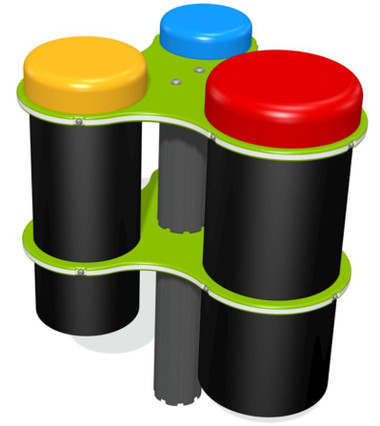
$2279.99
This sleek, ultra-durable Musical Bongos Tree will have all the children marching to the beat of a different drummer, as they take their turn playing...… read more
Creating the Perfect Musical Playground with Both Systems
The most effective musical playground design includes both Drum Playground Stations and Melody Makers in a thoughtfully arranged environment that maximizes their complementary benefits. Smart playground planners recognize that these systems serve different developmental needs and preferences, creating richer play experiences when used together.
An ideal layout might feature a central percussion area with drums positioned at various heights to accommodate different abilities and play styles. This area would support energetic, collaborative play and provide a natural gathering space for group activities. Around this, strategically placed melody instruments would create quieter zones for sound discovery, with some positioned for individual play and others arranged to encourage small-group interaction.
Think about how a child might progress through such a space: starting perhaps with solo play on a colorful xylophone in a less busy area, building confidence in making music, then moving toward interactive experiences with chimes designed for two players, and eventually joining the group drum circle when ready. This progression supports different comfort levels with sensory input and social interaction while introducing varied musical concepts.
The combination of instruments also creates opportunities for deeper musical learning. Children naturally discover how melody and rhythm work together, building a foundation for musical understanding. Teachers or playground supervisors can build on these natural discoveries, using the instruments to show musical concepts like tempo, dynamics, and harmony in a hands-on way.
When selecting instruments for a balanced musical playground, focus on variety in sound types, playing styles, and sensory experiences. Include drums that produce different tones—from deep bass sounds to higher, brighter notes—alongside melody instruments that offer contrasting sounds like the metallic ring of chimes and the warmer tones of xylophones. This diversity ensures that every child can find sounds that match their sensory preferences while expanding their musical range.
The perfect musical playground isn't about choosing between drums and melody makers—it's about creating a balanced environment where all children can access the developmental, creative, and social benefits of musical play in ways that fit their abilities, preferences, and growth potential. Little People's Cove understands this comprehensive approach, offering complete musical playground solutions that combine these complementary elements to create truly inclusive musical play spaces where every child belongs.
Want to create an inclusive musical playground that offers the best of both worlds? Little People's Cove specializes in designing complete musical playground environments that work for children of all abilities.

